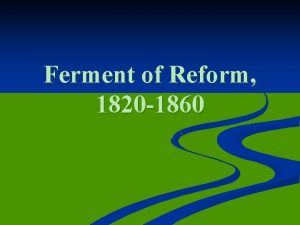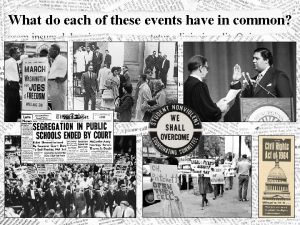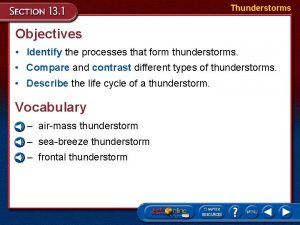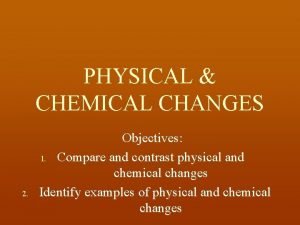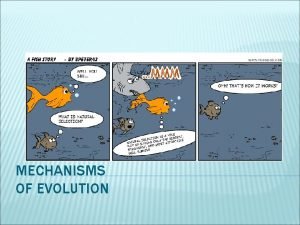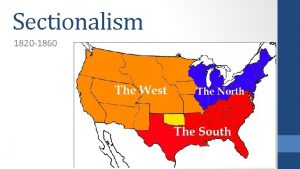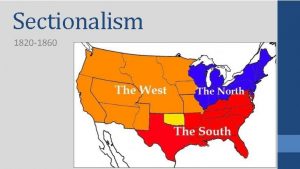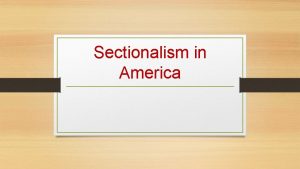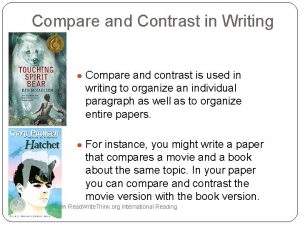Sectionalism 1820 1860 Essential Question Compare and contrast















- Slides: 15

Sectionalism 1820 -1860

Essential Question • Compare and contrast the characteristics and influences of the three major sections of the United States by the mid-19 th century.

Causes of Sectionalism • Loyalty to region • Social & cultural differences • Economic differences • Federal vs. States’ Rights

The North • Northeast, Mid-Atlantic, and Old Northwest • Commonalities: • Bound by transportation advances • Industrialization and commercial farming • Prohibition of slavery (most) • Characteristics: • Most populous • High birthrate • Large # of immigrants

The North • Industrial Northeast • Organized Labor - factories • National Trades’ Union (1837) failure • Urban Life • expansion of population —> expansion of slums • poor sanitation, disease, high crime rates • African Americans • 1% of population but 50% of free blacks • 2 nd class, non-citizens

The Agricultural Northwest • Old Northwest (OH, IN, IL, MI, WI, MN) • Tied to North East as result of: • military campaigns against Indians • building of canals and railroads • Agriculture • New inventions lead to expansion • Mc. Cormick reaper, Deere steel plow • New Cities • Buffalo, Cleveland, Detroit, St. Louis, Chicago • distribution/shipping points

Immigration • Causes of Influx: • inexpensive and expedited ocean travel • famines and political unrest (push) • economic opportunity in U. S. (pull) • Largest Groups: • Irish • potato famine • settled in cities • NY, Boston, Philadelphia • identified w/Democratic party • influence of/on Tammany • Germans • Revolutions of 1848 and economic hardships • settled in rural areas of Old Northwest • pro-public education • anti-slavery

Nativism • Reaction to: • Immigrant culture: • Catholicism (Irish) • Alcohol (Irish & Germans) • Political strength • Manifestations: • Supreme Order of the Star Spangled Banner • American Party - “Know. Nothings” • Riots in cities

The South • Agriculture and King Cotton • continued importance of cash crops and plantation system • only 15% of industrial production • impact of cotton gin • Slavery, the “Peculiar Institution” • Population Growth: 4 million (1860) • all natural • slave trade ended in 1808 • although some smuggling occurred • Higher demand in Deep South • majority of slaves now on plantations/large farms (opposite of early period)

Nature of Slavery • Slave Life • varied by plantation • harsh to humane treatment • development of slave culture • religion • slave hymnals • retention of kinship • Resistance • Routine: slowdowns, sabotage, escape • Uprisings/Rebellions: • Vesey (1822) • Turner (1831) • Effects: • Southern States tighten strict slave codes • Polarized nation: • Northerners became critical of institution • Southerners became more defensive

Southern Society • Free African Americans • Roughly 250, 000 • could own property • could not vote • had to prove status • White Society • Rigid Hierarchy • Aristocracy (Planters) • Farmers • Poor Whites • “Mountain People” • Cities • small populations compared to North • Southern Thought • Education • higher education only for the wealthy • Religion

The West • American Indians • Exodus to Great Plains • Impact of the Horse • Major Tribes: • Cheyenne • Sioux • The Frontier • Mountain Men • Beckwourth, Smith, Bridger • The Homestead • White Settlers • Role of Women – short life span • Environmental Damage • land • wildlife

Advances in technology & Transportation • Development of mechanized textile mills in England Eli Whitney’s Cotton Gin made Cotton Cloth affordable • Advances in transportation led to more settlement in the West along with increased demands for cotton.

U. S. Manufacturing (1860) Region Number of Employees 900, 107 Value of Product North Atlantic Number of Establishments 69, 831 Old Northwest 33, 335 188, 651 $346, 675, 290 South 27, 779 166, 803 $248, 090, 580 West 8, 777 50, 204 $71, 229, 989 $1, 213, 897, 518

Population and Occupation • Increase surge of Immigration due to developments in transportation • 1832 • Germans- West • Irish- North • Small villages and towns grew into thriving cities
 American reform movements between 1820 and 1860
American reform movements between 1820 and 1860 Arthur and lewis tappan apush
Arthur and lewis tappan apush Comparison chart romeo and juliet vs. west side story
Comparison chart romeo and juliet vs. west side story Costa questions level 2
Costa questions level 2 What was the purpose of the sibley commission
What was the purpose of the sibley commission Draw and label transverse wave
Draw and label transverse wave Spring tide position
Spring tide position Compare and contrast cold wave and wind chill factor
Compare and contrast cold wave and wind chill factor Explanatory vs expository
Explanatory vs expository Compare and contrast weather
Compare and contrast weather Compare words
Compare words Summary the most dangerous game
Summary the most dangerous game Transverse and longitudinal waves both *
Transverse and longitudinal waves both * Physical change
Physical change Compare and contrast gradualism and punctuated equilibrium
Compare and contrast gradualism and punctuated equilibrium Compare and contrast macbeth and lady macbeth
Compare and contrast macbeth and lady macbeth
